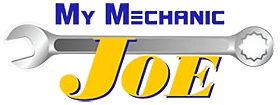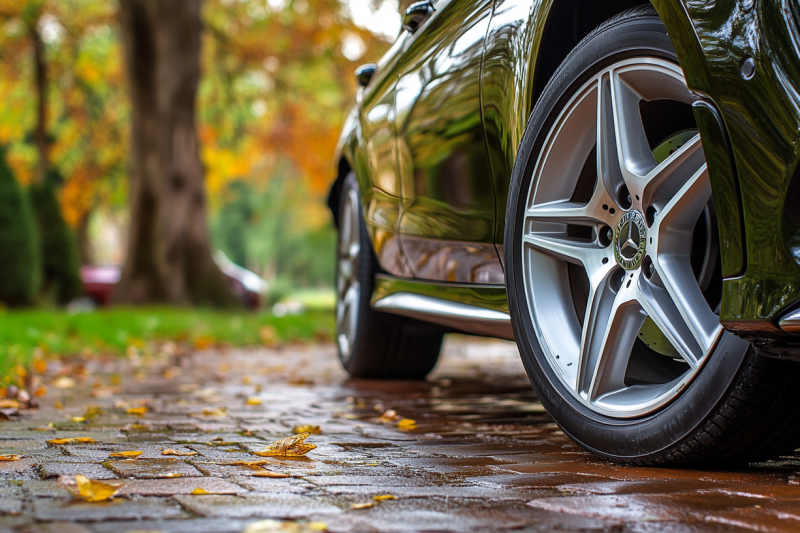
Taking care of your car is key to keeping it running smoothly. Routine maintenance might sound like a hassle, but it’s really important. Basic upkeep helps you catch small issues before they turn into big problems. This not only saves you money but also keeps your car safe and reliable on the road.
Skipping maintenance checks can lead to unexpected breakdowns and costly repairs. By staying on top of regular tasks, like oil changes and tire rotations, you ensure that your car performs at its best. These simple actions keep the engine running efficiently and improve fuel economy. They also help prevent wear and tear on other important parts.
Routine maintenance is like giving your car a health check-up. By staying proactive, you can enjoy a smoother driving experience and avoid those frustrating moments of car trouble. With a little attention and care, you can keep your car in top shape for many years to come.
Importance of Routine Car Maintenance
Table of Contents
- 1 Importance of Routine Car Maintenance
- 2 Essential Maintenance Tasks to Keep Your Car Smooth
- 3 Recognizing Signs That Your Car Needs Attention
- 4 Benefits of Sticking to a Maintenance Schedule
- 5 Q: What is a routine maintenance checklist?
- 6 Q: What are examples of routine maintenance tasks?
- 7 Q: How does preventive maintenance differ from reactive maintenance?
- 8 Q: What are the benefits of routine maintenance?
- 9 Q: How can I create an effective maintenance plan?
- 10 Q: What is included in a home maintenance checklist?
- 11 Q: How can I catch issues early with routine maintenance?
- 12 Q: What types of routine maintenance should I consider for my car?
- 13 Q: What is the routine maintenance workflow?
- 14 Q: Where can I learn more about routine maintenance?
Routine maintenance is key to keeping your vehicle running smoothly and avoiding unexpected breakdowns. It’s like visiting a doctor for a regular check-up. Just as doctors can spot health problems early, regular maintenance can catch small issues before they become big problems. This saves you time and money in the long run.
Consistent upkeep helps you maintain your car’s performance. When parts are cleaned, fluids are changed, and systems are checked, your car runs more efficiently. This leads to better fuel mileage, saving on gas costs over time. Regular maintenance also keeps your car safe. Checking brakes, tires, and lights ensures that everything is working as it should, reducing the risk of accidents.
Besides safety and efficiency, keeping up with maintenance helps preserve your car’s resale value. A well-maintained car with a documented service history is more attractive to buyers. They’ll feel more confident knowing the car has been properly cared for.
Regular maintenance can extend the lifespan of your vehicle. Cars, like anything mechanical, experience wear and tear. By taking care of these issues timely, you prevent major damage, thus increasing the car’s longevity. This reduces the need for costly major repairs down the road.
Essential Maintenance Tasks to Keep Your Car Smooth
Several essential maintenance tasks should never be overlooked to keep your car running smoothly. These tasks are fundamental to your vehicle’s health and can greatly impact its performance over time.
1. Oil Changes: Regular oil changes are crucial. Oil lubricates the engine parts and prevents overheating. Changing the oil and filter as recommended keeps the engine clean and functioning efficiently.
2. Tire Maintenance: Check tire pressure regularly to ensure safe driving and better gas mileage. Rotate your tires every 6,000 to 8,000 miles to encourage even wear and extend their life.
3. Brake Checks: Brakes play a vital role in your safety. Inspect brake pads and fluid frequently. Listen for any unusual noises during braking, which could indicate wear.
4. Fluid Checks: Your car relies on other fluids, such as coolant, transmission, brake, and power steering fluid, in addition to engine oil. Keeping these fluids topped up ensures smooth operation.
5. Battery Care: The battery provides the power to start your engine. Check for corrosion on the terminals and test the battery strength, especially if the car starts slowly.
6. Air Filter Replacement: A clean air filter helps your engine breathe easier and improves fuel efficiency. Make sure to replace it as needed to keep the engine running smoothly.
7. Inspect Belts and Hoses: Look for signs of wear and tear, such as cracks or fraying. Replacing them before they break prevents major engine damage.
By staying on top of these tasks, you can help ensure that your car performs at its best. Regular attention to your vehicle’s needs makes driving more enjoyable and worry-free.
Recognizing Signs That Your Car Needs Attention
Observing how your car behaves can help you catch problems early before they become big, expensive issues. Several signs may indicate your car needs some attention. One clear signal is unusual noises coming from your vehicle. If you hear squealing, grinding, or knocking sounds, these could be signs of wear in various parts of the car, such as brakes or the engine, and shouldn’t be ignored.
Vibrations or pulling to one side while driving are another concern. They might mean issues with your tires or alignment, leading to uneven tire wear and poor handling. If you notice these symptoms, getting your car checked out is a good idea. Additionally, if your steering feels loose or unresponsive, it could indicate problems with your steering system or suspension.
Be on the lookout for warning lights on your dashboard. While some might seem minor, such as a check engine light or a brake warning, they often indicate issues needing immediate attention. Ignoring these warnings can lead to more serious problems down the road. Changes in fuel efficiency are also worth noting. If you find yourself filling up more often without a change in driving habits, your engine may not be working as efficiently as it should.
Lastly, pay attention to any unusual smells like burning or gasoline odors. These could signal leaks or overheated components and need prompt investigation. Recognizing these signs can help you address small issues before they turn into major repairs, saving time and money in the long run.
Benefits of Sticking to a Maintenance Schedule
Following a regular maintenance schedule brings several benefits that keep your car running smoothly and safely. One of the main advantages is improved reliability. Keeping up with maintenance means checking and replacing parts before they fail, which can prevent unexpected breakdowns.
Adhering to a maintenance schedule also boosts your car’s performance. Regular oil changes, tire rotations, and filter replacements help your car run more efficiently. This attention results in better gas mileage and a more responsive ride. Plus, a well-maintained car lasts longer, providing more years of reliable service.
Safety is another crucial benefit. Regular checks of your brakes, tires, and lights ensure that your vehicle is safe for you and your passengers. Neglecting these aspects can lead to dangerous driving conditions, increasing the chance of accidents. So, sticking to a maintenance schedule helps protect you and others on the road.
Staying on top of maintenance is not just about practical benefits; it also helps maintain your car’s value. If you ever decide to sell or trade in your car, a full service record shows potential buyers that the car has been well cared for. This attention can lead to better trade-in values and make your car more attractive to other buyers.
Ultimately, the discipline of sticking to a regular maintenance schedule saves you money. Early detection of issues often means cheaper and quicker repairs. You avoid costly fixes associated with extensive wear or damage, making it a solid investment in your vehicle’s future.
Routine car maintenance is the secret to a long-lasting vehicle. You catch issues before they turn problematic by spotting warning signs early, such as changes in sounds, performance, and dashboard warnings. Sticking to a maintenance schedule not only keeps your car in peak condition but also enhances its safety, reliability, and resale value. Regular checks ensure every part of your vehicle functions properly, giving you peace of mind.
A well-maintained car isn’t just about avoiding breakdowns. It’s about ensuring your ride is efficient and dependable. With proper care, your car delivers better performance and can be trusted to get you where you need to go safely. Routine maintenance checks become an essential part of car ownership, leading to greater satisfaction and fewer costly surprises.
Is your car due for a check-up? Don’t wait until problems arise. Schedule an auto service in Woodstock, GA, with My Mechanic Joe today. Our skilled mechanics will ensure your vehicle stays in top shape, keeping you and your passengers safe on the road. Let us help you enjoy the benefits of a well-maintained car for years to come.
Q: What is a routine maintenance checklist?
A: A routine maintenance checklist is a systematic list of tasks and inspections designed to ensure that equipment, systems, or properties are maintained regularly to prevent breakdowns and extend their lifespan.
Q: What are examples of routine maintenance tasks?
A: Examples of routine maintenance tasks include changing air filters in HVAC systems, checking fluid levels in vehicles, lubricating moving parts, and inspecting electrical systems for safety.
Q: How does preventive maintenance differ from reactive maintenance?
A: Preventive maintenance involves regularly scheduled maintenance tasks aimed at preventing potential problems, while reactive maintenance occurs after a failure has happened, often leading to increased downtime and repair costs.
Q: What are the benefits of routine maintenance?
A: The benefits of routine maintenance include reduced downtime, extended lifespan of equipment, improved safety, enhanced efficiency, and lower overall repair costs.
Q: How can I create an effective maintenance plan?
A: To create an effective maintenance plan, identify all equipment and systems needing maintenance, determine the frequency of inspections, develop a checklist for routine maintenance tasks, and utilize maintenance resources or CMMS software to manage schedules and work orders.
Q: What is included in a home maintenance checklist?
A: A home maintenance checklist typically includes tasks like inspecting the roof, cleaning gutters, checking smoke alarms, servicing HVAC systems, and ensuring plumbing systems are functioning properly.
Q: How can I catch issues early with routine maintenance?
A: You can catch issues early by performing regular inspections and following a maintenance checklist, which helps identify wear and tear or potential failures before they escalate into significant problems.
Q: What types of routine maintenance should I consider for my car?
A: For your car, routine maintenance tasks include oil changes, tire rotations, brake inspections, fluid checks, and regular servicing as outlined in the car maintenance checklist provided by the manufacturer.
Q: What is the routine maintenance workflow?
A: The routine maintenance workflow involves scheduling maintenance tasks, assigning technicians, performing inspections and maintenance activities, documenting the work completed, and reviewing the effectiveness of the maintenance plan.
Q: Where can I learn more about routine maintenance?
A: You can learn more about routine maintenance through online resources, maintenance manuals, training programs, and by consulting with professionals who specialize in maintenance strategies for specific equipment or systems.

